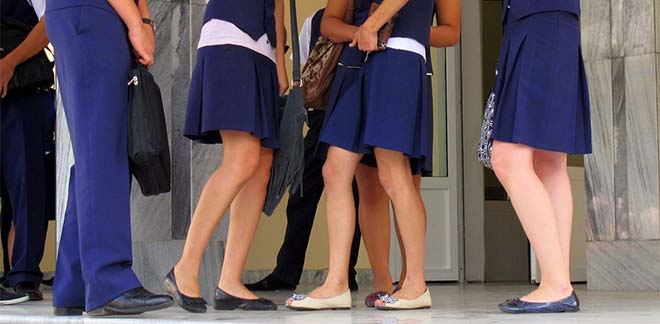Uniform rules needed for school uniforms

Allowing girls to wear shorts and trousers to school has been surprisingly controversial and what’s more stopping girls from wearing shorts and trousers may well be in contravention of the Federal Sex Discrimination Act. Some rigour around debate on the issue has been introduced with recent research on the topic.
The aim of providing comfortable and practical school uniforms to students of all genders is impeded by many different legislative requirements around Australia and the solution is a national uniformity of school uniform rules.
Flinders University’s Psychology Associate Professor Sarah Cohen-Woods has done recent research in South Australia to examine the compliance of the South Australian Department of Education and Child Development School Dress Code Procedure, which mandates that school dress codes provide flexible uniform options and the right to choose, regardless of gender.
The report – ‘Can girls wear shorts and trousers too? A review of South Australian school uniform policy following mandated requirement for choice,’ by Sarah Cohen-Woods and Rachel Laattoe (https://doi.org/10.31235/osf.io/kvwge) - identifies that despite the vast majority of public schools adhering to the mandate, a huge gap still exists between the mandated public school requirement and private schools (for which DECD requirements do not apply) that continue to ignore increasing pressure to offer choice.
Cohen-Woods is also looking at current school uniform stipulations in several Australian states, noting that great variations exist across the nation. Victorian requirements for public schools specifically say shorts and trousers must be included, while NSW private school anti-discrimination exemption on this matter sits under state-based legislation. However, this leads to added uniform rule confusion on a national level.
“These schools are still bound by the Federal Sex Discrimination Act, so there is some argument that schools can, in fact, be in breach of that act,” says Cohen-Woods. “It’s hard to believe one country can have different discrimination legislations.”
Her SA research also identified that many schools adhering to the mandate still don’t make specific provision for female-cut shorts and trousers – despite the primary focus for introducing the mandate being to promote more physical activity among girls at school (referencing the Healthy Kids Australia 2016 report, and the Girls Make Your Move campaign in 2016).
“Girls school uniform restrictions have the potential to impact physical and psychological wellbeing, while promoting gender inequality in school activities,” says Cohen-Woods.
Comparing girls’ uniform options across public and private school sectors, the review found that 98.6% of public and 26.9% of private school policies in SA included shorts as a uniform option for girls. Of those providing girls choice, 90.5% of public and 15.5% of private school policies listed gender specific or open choice shorts options. All public primary, high and majority of combined schools provided girls pants/trouser options, with 88.9% providing gender specific or open choices. This compared to 34.2% of private school policies including girls’ pants options.
“This study clearly demonstrates the discrepancy in girls’ uniform options between the public and private school sectors. What is needed now is uniformity across all schools, and all states and territories. As a country that still largely utilises school uniforms, Australia could be a leader in this.”
Image by Peretz Partensky under flcr cc attribution license